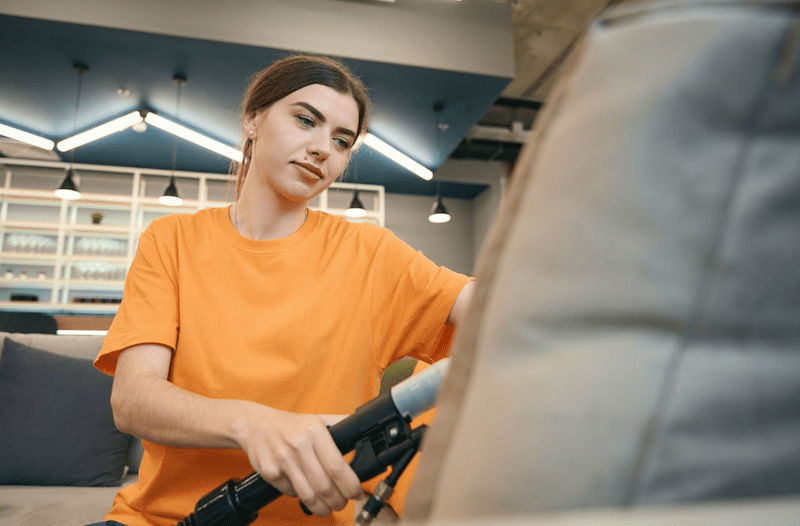Although upholstered furniture can take some beating, they need care and attention. Whether handling the weekly cleaning or tackling a tough stain, these tips will ensure your upholstered furniture stays in tip-top condition.
Familiarize yourself with the cleaning codes
Before you start, you must first consider the safest way to clean the upholstery. Most furniture will have a care tag containing one of the following codes:
- W: You can clean the fabric with a water-based cleaning solution.
- S: Only use a vacuum, dry clean, or water-free solution to remove stains.
- W-S: Clean with solvent-based or water-based cleaning solutions.
- X: Don’t use any cleaning solvent. Vacuum only or hire a professional cleaner, such as eMaids of Brevard County, to avoid damaging your upholstery.
Regular cleaning
Dirt makes the furniture look dirty and wears away the fabric. Vacuum the furniture regularly to limit dirt build-up, preferably weekly. Use a dry upholstery brush to loosen debris, pet hair, and the crevice tool in hard-to-reach spaces. Start from the top and work your way down.
Cleaning the furniture immediately after a spill or a pet accident causes a stain, preferably with a carpet cleaner.
Conduct a thorough, seasonal cleanup. An upholstery cleaner will come in handy to clean and revive the furniture cover. Similarly, you could use a steam cleaner, which effectively removes dirt, germs, pests, and allergens.
Test cleaning solution on a hidden spot first
Before dubbing any cleaning agent on upholstery, test if in an inconspicuous spot to ensure the cleaning agent is safe and avoid color loss or water spots.
Spot-clean stains
Don’t scrub stains, as that will only rub it in. Instead, blot the stain carefully, especially liquid spills. Blotting/dabbing also stops internal damage, so use a clean absorbent cloth to absorb any excess moisture.
Prevent stains
If the furniture does not have stain-repellent fabric protection, apply one or have an expert do it. Find out how long the protection lasts to ensure your furniture always has stain protection.
Use water sparingly
Water can leave spots and watermarks on microfiber upholstery, so use water sparingly. Even when cleaning other types of upholstery, use little water as any excess could soak into the underlying material and damage it.
For microfiber upholstery, use rubbing alcohol. For others, water-free, upholstery solvent sprays will work a charm.
Baby wipes are also a great way to clean cotton, polyester, or leather upholstery, as they contain mild cleaning solutions and little water.
DIY cleaning solutions
The sooner you treat a stain, the easier it will be to clear it. That can be tricky if you don’t have cleaning material at hand. Thankfully, you can make effective cleaning solutions to deal with different stains. That is, if blotting with a microfiber cloth didn’t work:
- First attempt: Gently dab club soda with a clean, white cloth. If that doesn’t work, soak the stain with a few drops of vinegar and let it sit for 15 minutes. Blot it off with water or a water and dish soap solution.
- Coffee stains: Mix water and vinegar in equal parts and add a little detergent. Blot it off after letting it sit for a few minutes
- Grease/oil: Let salt or rubbing alcohol sit on it and dab away with water and soap.
- Wine: Sprinkle salt and blot with lemon juice or hydrogen peroxide. Blot with water to rinse.
- Blood: Use hydrogen peroxide, then blot with water.
Conclusion
To ensure your upholstered furniture remains in pristine condition. By following the tips above, such as using DIY cleaning solutions, cleaning regularly, or preventing stains, the furniture will always stay clean and inviting.
Alternatively, you could employ a professional house cleaner to keep the upholstered furniture in like-new condition. If you are in Melbourne, FL, contact us today for expert upholstered furniture cleaning.


